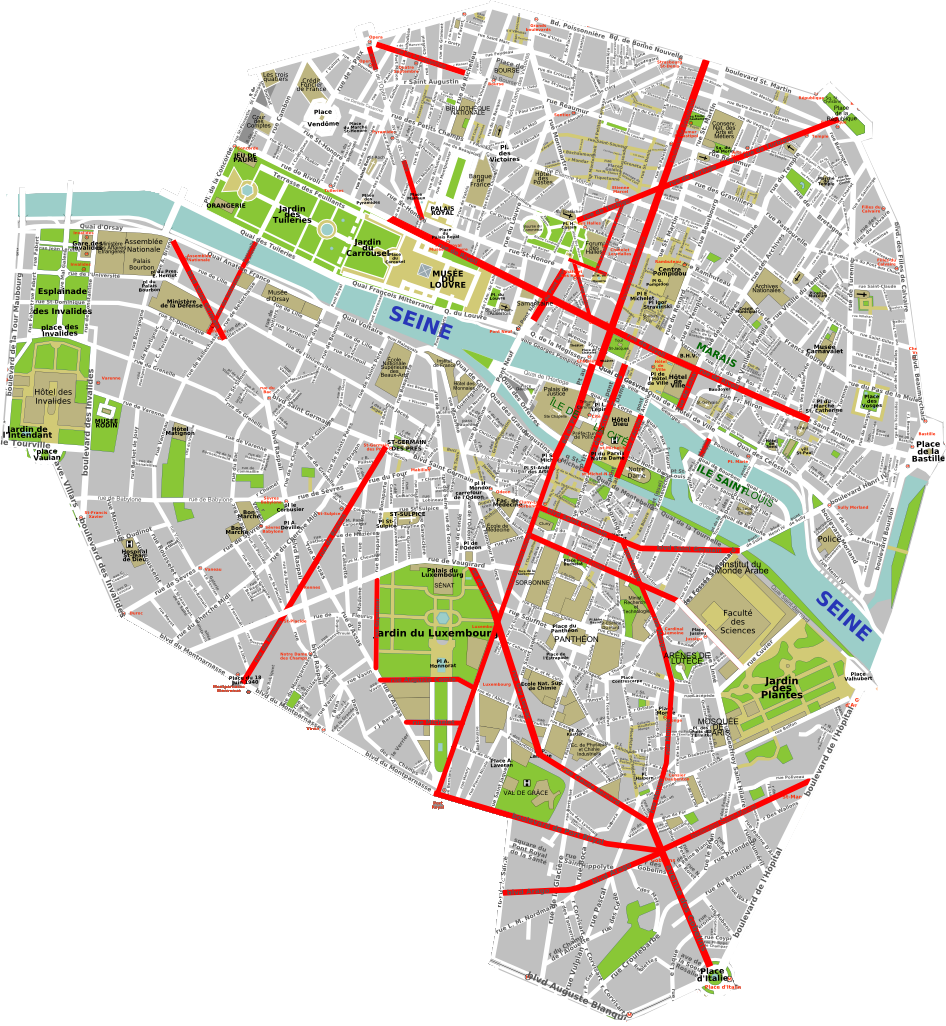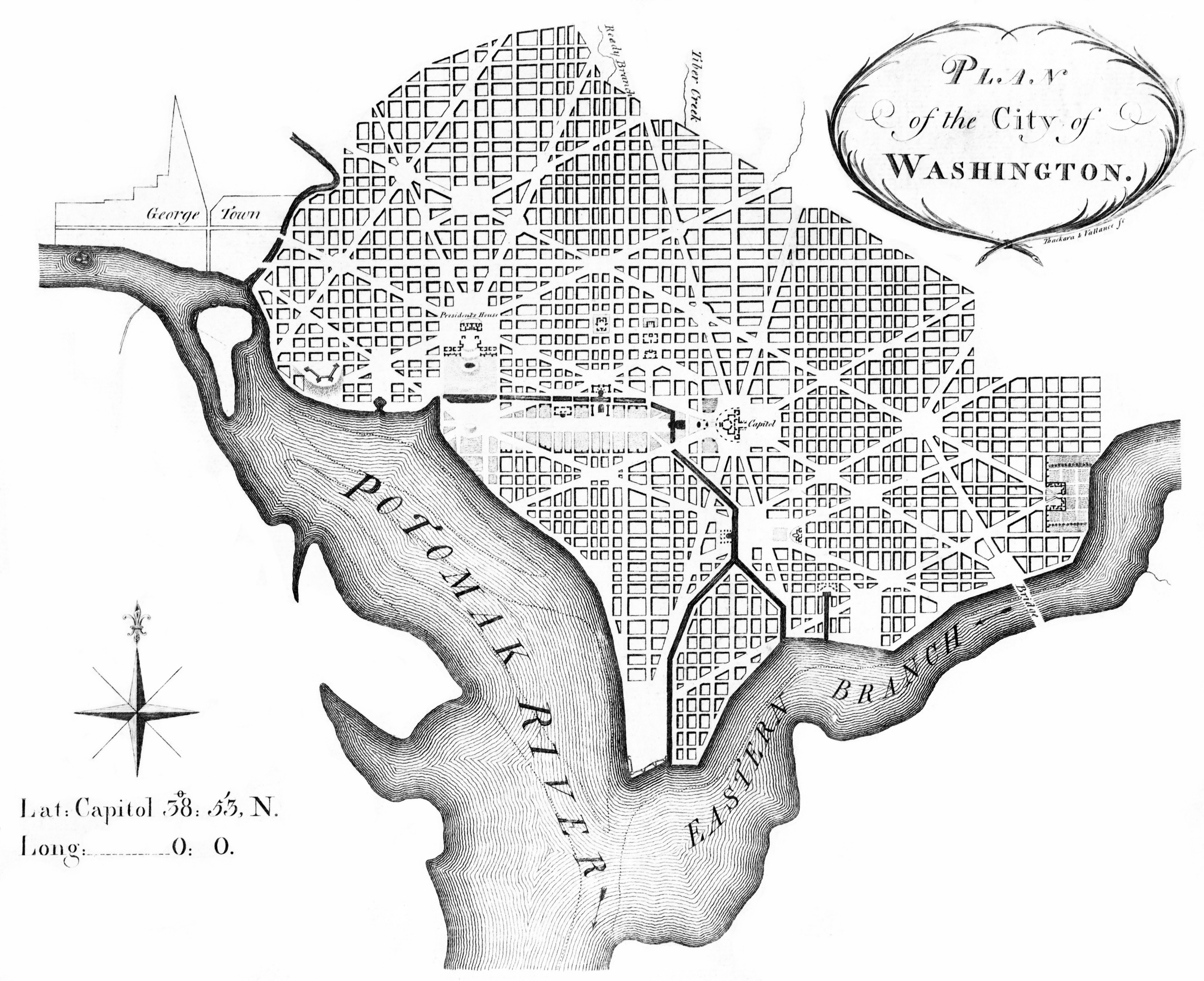
Camille Pissarro, Boulevard Montmartre au printemps, (1897)
Washington and Paris share remarkably significant traits, along with readily apparent differences. As national capitals, shared traits include numerous monuments, grand rivers and diagonal boulevards, excellent transit systems, signature totems positioned in vast parklands (Eiffel Tower and Washington Monument.) The traffic circles in both cities, made necessary by the diagonal bouleveards' intersections with other streets, create parks and landscaped areas that generally don't exist in rectangular street grids.
L'Enfant's plan for Washington, DC, as revised by Andrew Ellicot, 1792. Wiki. Click image for full view.

Michael Kooiman. wiki.

My photo.

Napoleon Napoleon III and Haussmann's changes to Paris. wiki. Click image for full view.
DC is remarkable in that it was cast as a new city, with a sweeping master plan of streets, parks and primary structures. Yet, the city has a rich variety of architecture and urban spaces owing to the infill that occurred between the Olympian scale of initial placement of the Capitol and the White House, along with the Parisian diagonal grid and its traffic circles.
Paris was a very old city with a medieval character and its grand boulevards were, over time, cut through existing urban fabric by successive emporers, primarily and most recently Napoleon III. Its buildings are commonly made of limestone, uniquely available from vast mines below the surface of the city. Washington was the first national capitol to be laid out according to the design of a specific planner, Pierre L'Enfant. Even the most casual comparison of the two cities' maps shows the organic, complicated geometry of Paris in sharp contrast to the generally rectangular grid of Washington set in juxtapostion to its diagonal boulevards.
Both cities, though, have beautiful rivers, a wealth of parkland, generous public squares and "left-over" spaces created by the intersection of diagonal corridors with the differently-aligned adjacent streets. Their transit systems are both excellent. Paris' opened in 1900, DC's in 1976.
Paris' changes commissioned by Napoleon III were undoubtedly admired by Daniel Burnham, he of the "Make no small plans" quote. I don't believe that any existing city, without destruction by war or other disaster, has ever undergone rapid, planned changes of this magnitude. The emporer chose Georges-Eugene Haussmann to plan and carry out the changes to the city.

My photo. Street-performing band at DuPont Circle, DC. Despite the weight of government, both cities sport famously lively streets. Here's one from Paris.
Additional posts about some of the public spaces that have been created in both these cities will follow from time to time.


No comments:
Post a Comment